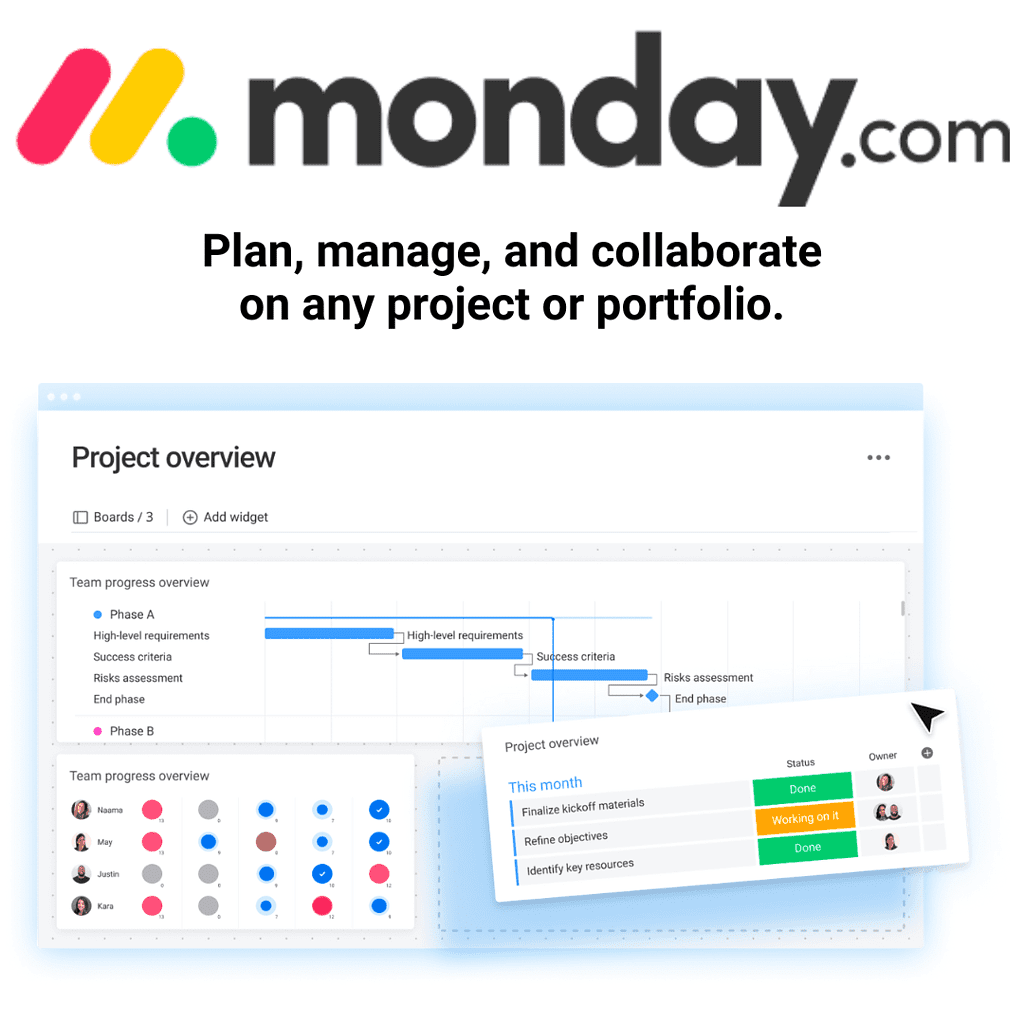How to Get Management on Board With Eliminating Technical Debt

Estimated reading time: 16 minutes
Jack had always been an ambitious and hardworking employee, so when he was hired as a Salesforce Admin at Elegant Earrings Inc., he was more than excited. He embraced the challenge of using his technical skills to help the company grow and succeed.
However, Jack began noticing something strange after a few years at the job. Over time, it seemed like massive amounts of legacy clutter had built up in his Salesforce environment. Record types, page layouts, validation rules—it seemed endless! On top of all this was an enormous amount of installed packages that no one ever used!
At first, Jack tried to ignore it, but soon enough, he realized how serious this issue could be if not addressed immediately. These inefficiencies would cause significant headaches for his team if left unchecked. He knew they needed help; they just needed to find someone who could come into their environment and clean things up correctly.
So Jack decided it was time to take action; he put together a detailed proposal outlining why they should bring on an external consulting firm and presented it directly to senior management during their weekly meeting. At first, everyone hesitated—they weren’t sure if it was worth spending money on outside help when everything seemed fine from where they stood—but eventually, Jack convinced them with facts about how much better their performance would be once everything was cleaned out and appropriately organized again. Finally, after some deliberation, everyone agreed: The clutter must go!
In no time, Elegant Earrings Inc brought on a consultant who specialized in cleaning out legacy clutter from Salesforce environments such as theirs –and finally, things started getting back on track! With the new consultant’s knowledge and expertise combined with Jack’s dedication towards ensuring success for his team –the sales process became smoother than ever! Everyone thanked him for taking the initiative by bringing forth this issue which otherwise might have become disastrous later down the road–and finally, peace returned within Elegant Earrings Inc.
Introduction
Are you a Salesforce Administrator whose organization is suffering from technical debt?
If so, you may feel overwhelmed and unsure of how to tackle the problem.
That’s understandable — tackling this kind of issue can seem impossible. But before giving up hope, there are steps you can take to get management on board with taking action to fix it!
This post will explore tangible methods for convincing management that the task must begin now.
You don’t have to be alone in resolving these critical issues anymore — let’s jump right in!
🔥 SUBSCRIBE! 🔥

Get practical Salesforce advice in your inbox!
Feeling overwhelmed by everything you have to do as a Salesforce Admin?
I know how it feels.
I created the FREE Brainiate Newsletter – to help you stay up-to-date with the latest Salesforce news, advice, and product recommendations.
Sign up for my newsletter and get all that information right in your inbox – without having to search for it yourself. You’ll be able to focus on your projects with peace of mind, knowing you’re always up-to-date on the latest Salesforce updates.
Click the button below and sign up for my FREE Brainiate Newsletter today!

How to Get Senior Management on Board With Resolving Technical Debt in Salesforce
Assess the scope of technical debt
Salesforce Admins understand that technical debt can have a massive impact on the performance of their Salesforce instance. Businesses and organizations often overlook this issue due to its complexity, but it’s essential to address it to keep your instance running optimally as quickly as possible.
The best way to get senior management on board with resolving technical debt in Salesforce is by assessing the scope of the problem and conducting a thorough analysis. This assessment should include evaluating the extent of the problem, its impact on performance, and potential risks. To expedite this process, Admins can leverage Salesforce Optimizer, which provides a comprehensive report displaying all components within Salesforce that are not currently assigned, outdated, or minimally utilized.
By taking these steps, admins can accurately depict the issues they face regarding technical debt in Salesforce and recommend viable solutions that can help avoid further problems down the line. When presenting your findings to senior management, make sure you back up your claims with facts and figures. This way, they can understand how serious this issue is and how much time and money could be saved by addressing it now rather than later. Additionally, don’t forget to emphasize why this issue is essential for the success of their business; explain how optimizing their Salesforce implementation can improve customer experience and benefit their bottom line in the long run.
Finally, explaining any cost savings associated with fixing issues before them occurring will also be beneficial when trying to gain buy-in from senior management. Showing that addressing the technical debt upfront will eliminate future problems while saving money may be just what they need to see to take action immediately. It’s essential for Salesforce Admins everywhere looking to get senior management’s support for tackling technical debt in Salesforce that they do their homework ahead of time to come prepared with an effective plan for success!
DOWNLOAD THE CHECKLIST!

Free checklist: How to Move up in your Salesforce career
If you’re looking for a Salesforce job, trying to improve your career and boost your income, you’ll want to download this checklist!
With easy-to-follow and practical advice, this checklist will give you the roadmap to follow to position your Salesforce career for success!
Quantify the impact
Salesforce Admins can get senior management on board with resolving technical debt in Salesforce by quantifying its impact on the organization. By using metrics and data to demonstrate the cost of technical debt, Admins can show that it is affecting their team’s productivity, customer experience, and business outcomes in a severe way.
For instance, tech debt can make it difficult to respond quickly to changing customer demands or deploy resources as needed. It also makes solving problems more time-consuming and expensive. Existing processes often become inefficient due to tech debt—they require more effort than they should while providing less value. This all costs money, both directly and indirectly. That’s why it’s essential to communicate these costs to senior management so they understand what needs to be done to reduce tech debt and improve performance.
Admins should start by gathering data on the current state of Salesforce performance, including response times for customers and employees, the load time for different tasks or processes, the number of bugs reported over time, the number of hours required for specific tasks or processes, etc. Presenting this data clearly can help paint a picture of how much of an issue pressing technical debt is for the organization.
Admins may also want to report on key performance indicators (KPIs) such as customer satisfaction scores or revenue growth over time. These numbers are just as important when communicating the need for better management of Salesforce-related projects. If those KPIs aren’t meeting expectations because of technical debt, the organization must take action before falling even further behind its competition.
Additionally, Admins should speak directly with employees dealing with increased frustration due to technical debt—they can provide valuable insight into how it’s affecting their daily workloads and job satisfaction levels. Collecting qualitative feedback like this can round out your presentation nicely while simultaneously showing that you’re considering employee sentiment when making decisions about Salesforce optimization projects.
Ultimately, quantifying the impact of technical debt on an organization is vital if you want senior management’s support in resolving these issues within Salesforce systems. It demonstrates that these problems have tangible consequences—consequences which will only get worse if left unaddressed—and thus strengthens your case for dedicating additional resources towards tackling them effectively and efficiently moving forward.
FREE EMAIL TEMPLATES

Free email templates for Salesforce admins
These FREE email templates can supercharge your productivity and efficiency as a Salesforce Admin. They cover various topics, such as getting information about a new user, territory redeployment, importing data, and following up on report requests.
Whether you need to save time on admin tasks or improve your team’s communication, these templates will help you get the job done.
Plus, they’re 100% customizable, so you can easily tailor them to your needs.
So what are you waiting for? Get started today and see the results for yourself!
Communicate the urgency
Salesforce Admins have an essential role in helping their organizations manage technical debt, but they can’t do it alone. Getting senior management on board with resolving technical debt in Salesforce is essential before anything else can happen. Communicating the urgency of this issue is critical.
Senior management needs to understand that if they don’t act soon, the organization will be dealing with much more severe problems down the line. Technical debt is like water: it fills up cracks and crevices, exacerbates existing issues, and eventually leads to costly and time-consuming repairs. The longer it goes unaddressed, the worse the damage will be when it erupts.
For example, failure to resolve technical debt can cause user adoption issues because of slow system performance or a clunky user experience. It can lead to increased development and maintenance costs due to unforeseen complications and errors that require specialized expertise for resolution. In some cases, entire applications or components may need to be rebuilt from scratch to eliminate underlying problems caused by old code or outdated architectures.
Salesforce Admins should also explain how unresolved technical debt directly affects business operations. This could include inefficient processes, missing or inaccurate data, or compliance risks due to non-standards-based systems or architectures failing audits. By showing how delays in addressing technical debt are already leading to increased costs, decreased productivity, and other tangible business impacts, Salesforce Admins can help senior management understand why resolving these issues is so urgent—and why they need their help now to prevent future headaches down the road.
In short: Communicate the urgency of resolving these issues; emphasize that this won’t go away on its own and will only become more costly (in terms of time as well as resources) if left unaddressed; provide examples of current problems being caused by technical debt; explain how unresolved technical debt affects business operations now; and show why senior management’s support is crucial for success in managing this critical issue for your organization. By taking these steps, you can ensure that your organization has all the support it needs—and you can continue doing what you do best: saving the day!
DOWNLOAD YOUR COPY!

The quick-start guide to gathering business requirements
Are you responsible for ensuring Salesforce projects run as smoothly as possible?
With the Business Requirements Gathering for Salesforce Projects: The Definitive Guide for Salesforce Admins, you can quickly get up to speed on the best practices for gathering business requirements.
This comprehensive book, written by Salesforce consultant and trainer David Giller, provides powerful methods and insights to ensure your projects are successful.
Prioritize the most critical issues
Salesforce Admins understand the importance of addressing technical debt in Salesforce. Unfortunately, senior management may not recognize the same criticality as Admins and developers on the front lines, working with Salesforce daily. To ensure buy-in from senior management when it comes to resolving technical debt in Salesforce, Admins must be able to communicate their message effectively and efficiently.
The first step is to prioritize which issues need attention first. By assessing the current state of technical debt within Salesforce and determining which items have the heaviest impact on business operations and user experience, Admins can create a list of the most critical issues that need to be addressed immediately. This list should consider not only functionality issues but also performance and security concerns.
Once a prioritized list has been created, Admins should develop a plan for addressing each issue in order of importance. This plan should include detailed steps on how each identified challenge will be solved and estimated timeframes for resolution. The plan should also provide concrete data or evidence demonstrating how addressing each issue will benefit both users and the company (e.g., improved productivity or cost savings).
To further demonstrate the value of resolving technical debt in Salesforce, Admins can present senior management with reports comparing current performance metrics side-by-side with projected performance metrics following the implementation of a proposed solution plan. Such reports provide tangible evidence of how solving these challenges can positively impact end-user satisfaction and organizational growth.
Finally, by consistently tracking progress against goals outlined in the initial resolution plan, Admins can easily report to senior management on any successes or challenges encountered along the way so they can make more informed decisions regarding continued investment in resolving technical debt within Salesforce.
By taking proactive steps towards better understanding and managing the technical debt within Salesforce, Admins can gain support from their peers and senior leadership while helping their organization become more successful in using its technology investments over time!
POST SPONSOR:

Jasper AI
Salesforce Admins are busy and overwhelmed managing projects and incoming requests.
It’s challenging to keep up with everything when constantly being pulled in different directions. You need a way to manage your time more effectively, and that’s where Jasper comes in.
With Jasper, you can easily delegate writing tasks to save yourself time and stress.
Tell Jasper what you need, and he’ll take care of the rest, using persuasive language that will make your colleagues take notice.
Make a case for investment
Salesforce Admins understand the importance of managing technical debt but often cannot get senior management on board with dedicated resources to tackle the task. To ensure you and your team can resolve this issue, it’s essential to make a case for investment that clearly outlines both the cost and time needed to address any technical debt concerns.
When constructing a business case for resolving technical debt in Salesforce, include a comprehensive overview of the time and money necessary to address the issues. Start by gathering relevant data (including actual metrics) that outline the potential cost savings associated with addressing technical debt early on. For instance, consider how much time is spent manually entering data into Salesforce or troubleshooting recurring performance issues due to inefficient code structures. These figures should be used as evidence when arguing why investing in resolving technical debt is beneficial for productivity and efficiency and worth the costs associated with tackling the task.
In addition to outlining financial implications, it’s essential to provide evidence of how resolving existing technical debt will impact user experience and customer satisfaction over time. Consider how customers become frustrated when accessing an outdated website or using slow software due to inefficient coding practices; these issues create bottlenecks, leading to decreased sales and revenue losses due to poor customer loyalty rates in the long run. Explain how resolving underlying problems will significantly improve customer retention over the year, demonstrating how resolving issues now will save money in the long term.
Finally, don’t forget that reducing risk is just as important as cutting costs. When creating a business case for addressing Salesforce technical debt, emphasize compliance concerns that could arise if improvements are not made quickly, such as GDPR non-compliance or data leakage if security protocols are not followed correctly due to poor coding practices. Highlight potential legal or financial penalties associated with failing to adhere to industry regulations – use stories from other companies who have gone through similar situations as evidence here, too!
Overall, creating a compelling business case when tackling Salesforce technical debt requires more than just an understanding of costs; you must articulate how addressing these issues results in tangible gains within both user experience and revenue streams over time. By presenting a well-rounded argument backed up by facts and real-world examples, you’ll ensure senior management understands why investing resources into tackling this problem now will benefit them (and their customers) greatly in years come!
Collaborate with other departments
One of the best ways for Salesforce Admins to get senior management on board with resolving technical debt in Salesforce is by collaborating closely with other departments. Collaborating across teams will help demonstrate the full impact of technical debt and make it easier to build a unified approach when making decisions.
Start by engaging with stakeholders from other departments to understand their perspectives and build awareness around the importance of dealing with technical debt. Everyone must understand how technical debt can affect performance and result in lost productivity, customer satisfaction issues, higher risk, higher costs, longer development cycles, and an inability to leverage emerging technologies.
You should also consider how other departments might be impacted by any changes you want to make when resolving technical debt. Invite department representatives to participate in meetings or workshops to improve Salesforce performance. This will help them become more aware of the various aspects that must be addressed to ensure success. Furthermore, this will give them a chance to provide feedback on what they believe are the most important objectives for their respective departments within the project.
It’s also essential to have conversations about how working together can influence success in overcoming technical debt. By showing clear communication between departments and demonstrating your commitment to achieving positive results, it will be easier for senior management to understand why investing time and resources into tackling this problem benefits the entire organization.
Finally, as part of your efforts, you should track progress regularly so that milestones can be identified and celebrated as part of a journey toward eliminating technical debt in Salesforce projects. This will create more visibility on successes and potential areas where improvement might be needed – allowing everyone involved to understand better what works well and doesn’t work well when trying to resolve these issues quickly and effectively.
POST SPONSOR:

Monday.com
You have a lot of projects on your plate, and it feels like you’re always playing catch-up.
Juggling multiple tasks, timelines, and deadlines can be incredibly frustrating and overwhelming. It’s hard to know where to start, let alone keep track of everything.
Monday is the solution for project management mayhem. With Monday, you can easily create new projects, track tasks and milestones, set deadlines, share files and comments with your team, and more.
Click on my affiliate link to start a free trial of Monday, and see how it can transform how you manage your Salesforce projects.
Educate senior leaders
When it comes to getting senior management on board with resolving technical debt in Salesforce, educating them is critical. It’s important to help senior leaders understand the issue’s full scope and what’s at stake if it isn’t addressed. Explain the various facets of technical debt that they should consider, such as cost savings, productivity, customer satisfaction, and more. Acknowledge that while these measures might require some upfront investments or additional resources, the long-term returns can be significant.
Start by outlining what tech debt is and how it impacts Salesforce performance – its features, architecture, scalability, and security. Describe how this debt accumulates over time: when a developer takes a shortcut for a quick fix or updates something without properly testing; when old code isn’t retired; when new technology isn’t fully integrated. Show how this negatively affects the customer experience and sales figures by making your team less efficient, resulting in higher costs and fewer sales opportunities.
Explain that resolving technical debt can lead to cost savings through improved efficiency in both development and operations. As a result of faster development cycles with fewer bugs, there is potential for better customer satisfaction because products get delivered faster with fewer issues. This could also affect employees’ job satisfaction due to their increased sense of accomplishment with each successful product launch.
Finally, talk about how resolving tech debt now rather than later has certain advantages, such as lower costs associated with fixing problems before they become too severe or widespread; reduced risk of data breaches; reduced maintenance costs; and improved scalability for future growth. And always emphasize that all these improvements are made possible through proper investment in the technical process upfront. This investment will ultimately pay off down the line both from an economic perspective and an organizational one by creating a solid foundation for innovation on which to build in the future.
Identify Long-term solutions
It’s also essential to explore long-term solutions that can help prevent technical debt from accumulating. This could include regular maintenance of existing Salesforce applications and integrations, upgrades when necessary (for example, when new features are available that could simplify old processes), or automated processes that take care of mundane administrative tasks.
Another way to convince senior management to prioritize resolving technical debt is through cost savings. Showing how quickly and easily a backlog can be cleared up by investing in these projects can help demonstrate their value. It’s worth noting that while short-term investments may generate immediate returns, these gains are often temporary; identifying long-term solutions will ultimately result in greater efficiency and cost savings in the future.
Finally, Salesforce Admins need to emphasize how much time can be saved with a comprehensive plan for dealing with technical debt. Shortcuts taken now may appear appealing but will only lead to more headaches as issues pile up and pile on each other until they become unmanageable. Taking the time to address problems now adequately will save time and resources later.
In summary, Salesforce Admins should focus on conducting an audit of existing technical debt before exploring long-term solutions like regular maintenance, upgrades, and automation that can help prevent further problems from accumulating over time. Pointing out potential cost and time savings can help make a case for investing in these projects more compelling to senior management. With a clear plan for dealing with technical debt over time, Salesforce Admins will save money and have more time available for other initiatives that could drive business growth.
Leverage external expertise
Salesforce Admins looking to get senior management on board with resolving technical debt in Salesforce should consider leveraging external expertise. Bringing in outside experts or consultants (like the Brainiate team!) can provide an impartial evaluation of the existing technical debt and help create a strategy for resolving it. This strategy should be tailored to the company’s needs, considering their current resources, the cost implications of resolving the technical debt, and any new features that need to be integrated.
External consultants can assist with identifying areas where solutions are needed, providing expert advice on related topics such as application architecture, customer service operations, and customer experience design. They can also advise on best practices for optimizing existing processes, such as security and performance testing, database tuning, or automation. Furthermore, they can also help assess risks associated with implementing new technology or IT initiatives that may affect your organization’s ability to resolve technical debt quickly.
Having an experienced resource available to answer questions about technology and its implications for your organization’s success can be invaluable when trying to make a case for investing in resolutions for technical debt. Additionally, a qualified consultant will understand how different technologies work together in a given environment and how these technologies will interact with existing systems. This knowledge could be invaluable when constructing a roadmap to manage the technical debt issue and eliminate potential pitfalls.
Overall, consulting an external expert can be incredibly beneficial when convincing senior management of the importance of resolving technical debt issues within Salesforce environments. Not only do they bring expertise that likely doesn’t exist internally, but they can also provide unique insight into potential solutions and best practices surrounding this critical topic. With their assistance, Salesforce Admins can feel confident that they have taken every step necessary to address their organization’s financial constraints while still achieving their desired outcomes regarding resolving technical debt issues in Salesforce environments.
Conclusion
As a Salesforce admin, you are uniquely positioned to help your company save money by eliminating technical debt.
You can do this by working with management to create a plan and budget for addressing technical debt and then making a case for why it is essential to address technical debt regularly.
By following these steps, you will be able to get management on board with eliminating technical debt and help your company save money in the long run.
Did you find this useful? If so, share it online!
